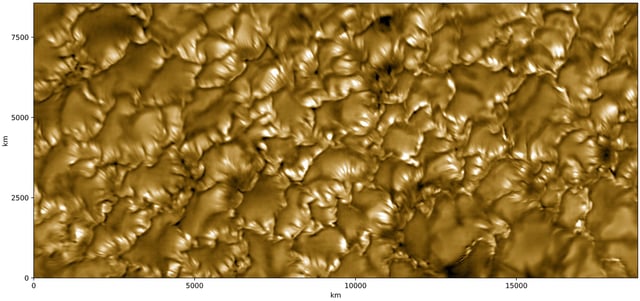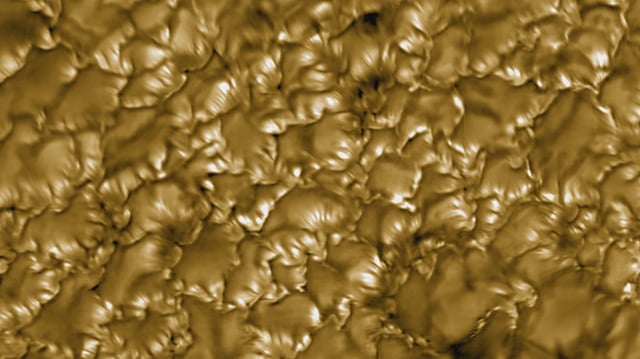Overview
- The Daniel K. Inouye Solar Telescope’s Visible Broadband Imager captured G-band images at better than 0.03 arcsecond resolution, resolving striations just 20 kilometers across solar granule walls.
- Alternating bright and dark lines arise from curtain-like sheets of magnetic fields that modulate plasma density and opacity along the photosphere.
- Observations confirm subtle Wilson depressions, showing localized magnetic pressure depresses the visible solar surface by a few kilometers.
- High-fidelity magnetohydrodynamic simulations align with the new images, validating models of fine-scale solar magnetism.
- These insights come as the Sun reaches solar maximum, offering refined inputs for predicting flares, coronal mass ejections and related space weather impacts on Earth.

